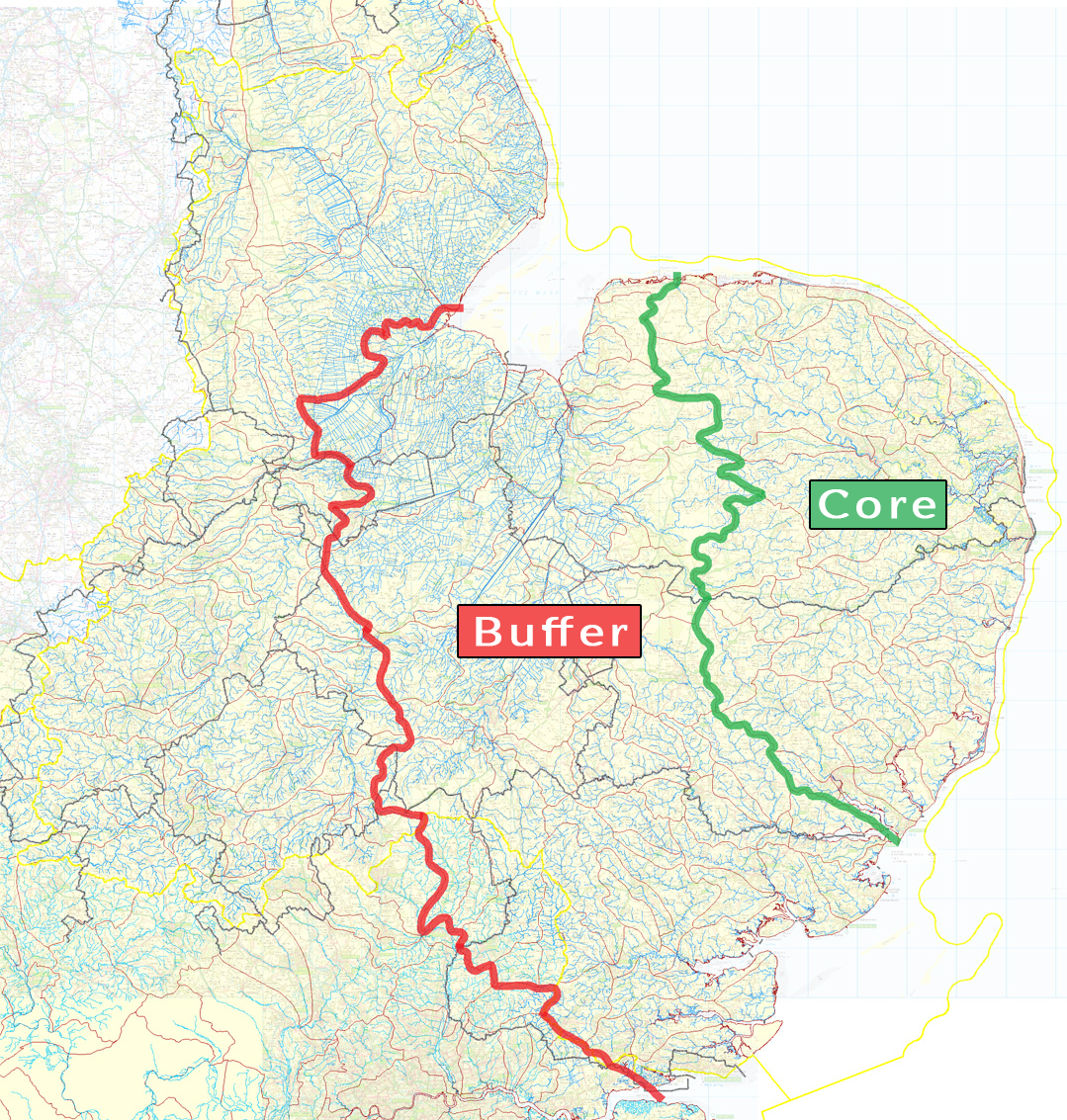WRE Eradication Strategy
A GB-wide American mink eradication campaign would be a monumental challenge. Before it could be even seriously considered, the feasibility of removing every last American mink from such a huge and geographically complex island would need to be demonstrated. For that, a landscape-scale trial is needed, and that’s exactly what WRE sets out to achieve. But, you may ask, how can you achieve eradication when the project area is merely part of a large land mass and continuously at risk of American mink immigrating from elsewhere? In such circumstances, surely eradication could only be achieved for a matter of hours or days until the next arrival across a porous border? Indeed so, and consequently much thought has been given to what eradication success might look like, as strange as that might seem.
In reality, the eradication of a mammal species would be achieved even if all animals of only one sex were removed. Reproduction would stop, and soon the last animal would die. The WRE project could therefore be considered a success if either all male American mink or all female American mink were to be removed from a defined area. We term this area the Core Area. To prevent American mink continuously entering the Core Area from the rest of Britain, we need to protect it with a barrier. Erecting a physical barrier would be impossible, but a similar effect could perhaps be achieved by setting up a network of traps around the perimeter of the core area, with the idea of intercepting all American mink before they can reach the Core Area. American mink can travel distances of up to 60km from where they were born, so we aimed to make this trap-rich boundary 60km wide, and we term this the Buffer Zone.
In American mink, males commonly mate with many females, so the rate of reproduction would barely change even if, say, half of all males were removed. If half of all females were removed, however, then roughly only half the number of offspring would be produced. An American mink eradication campaign will therefore progress much more rapidly, and will have a greater chance of success, if trapping effort is focused on females. Furthermore, given the importance of female reproduction to population persistence, we define project success as there being no known breeding females within the Core Area for a period of 12 months. If one is found (and trapped), the clock is reset to zero.
The Operational Plan for our Eradication Strategy is available to view here




